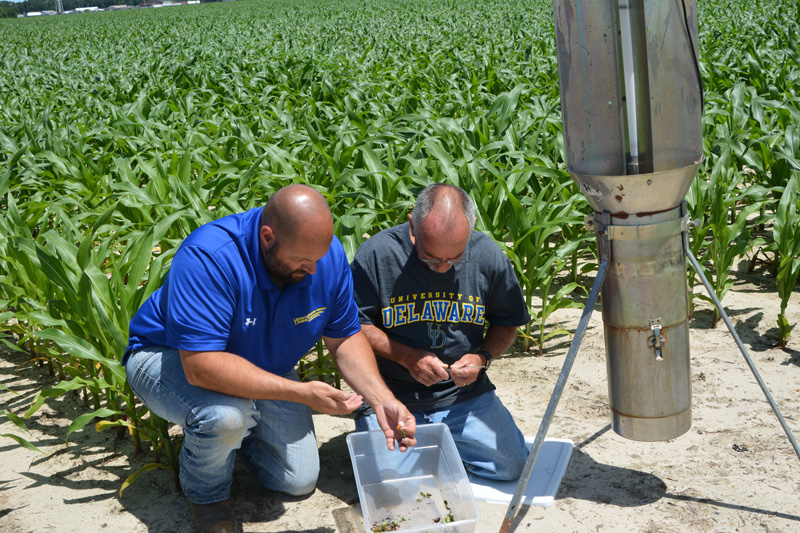

Trapping bugs, helping farmers
Photo by Michele Walfred June 26, 2018
UD Cooperative Extension coordinates statewide insect trapping program to benefit growers
Since the early 1970s, the University of Delaware’s Cooperative Extension Integrated Pest Management (IPM) program has coordinated a statewide insect trapping program—which includes black light traps and pheromone traps—to helps growers and industry professionals track seasonal occurrences of pests that might affect their crops, as well as let them know the best times to apply insecticides.
The program also helps academic professionals, as information gathered from the program was used in a recent study led by the University of Maryland and published in the Proceedings of the National Academy of Sciences, demonstrating regional pest suppression.
The black light traps use ultraviolet light to attract insects that are usually active at night. Pheromones are chemical substances usually produced by animals and they can be used to lure insects to a trap.
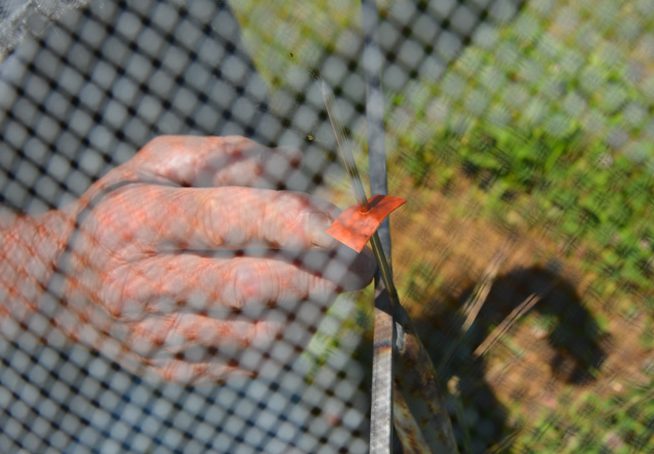
Since the program began, traps have been located on cooperating growers’ farms throughout the state. In the early days, 25 black light traps were serviced by grower cooperators and collections were sent to the University where a technician hired by UD’s IPM program would identify key moth species.
Starting in late 1980s, trap monitoring shifted to a seasonal IPM employee who sent the trapping information electronically to IPM personnel. Today, that information is placed on the IPM website.
Joanne Whalen, a retired IPM specialist who joined Cooperative Extension in 1979 and became the IPM coordinator in 1983, instituted this change to ensure that trap catch information was received by growers in a timely manner.
In addition to the IPM website, Whalen sent the information to Penn State’s PestWatch website to share the information regionally. During her time as IPM specialist, she also used the information to develop articles for a statewide Weekly Crop Update newsletter.
In 2017, a pilot trapping program was initiated to train growers and consultants on how to monitor their own traps. Participants identified moths and reported moth catches to the IPM program to post on the IPM website. Currently, 14 black light and 13 pheromone traps are checked two times a week from April through September.
In the early days of the trapping program, black light traps, which attract a variety of insects, were used to monitor for black cutworm, true armyworm, corn earworm and European corn borer.
Since the late 1980s, the focus of the program shifted to monitoring primarily corn earworm and European corn borer. In recent years, the black light traps have also been used to monitor stink bug species, both the green and brown native species and the invasive brown marmorated stink bugs.
Currently, pheromone traps are used for corn earworm and emit a specific pheromone that attracts corn earworm moths. Other pheromone traps that have been part of the trapping network in the past have included black cutworm, European corn borer and Western bean cutworm, which will be added to the network again in 2018.
Bill Cissel, the IPM extension agent, said that extension personnel, as well as an hourly wage employee, monitor the traps twice a week and continue to post the results to the UD Extension Insect Trapping Program website.
They are also exploring ways to share trap catch data nationally by including it in the Integrated Pest Information Platform for Extension and Education (iPiPE) and with PestWatch, operated by Penn State University.
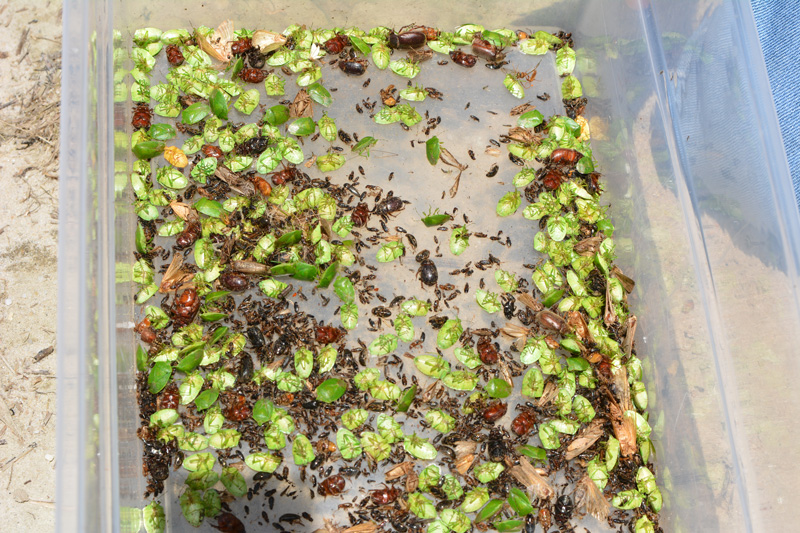
“Growers, crop consultants, agribusiness personnel, processing vegetable industry fieldmen and researchers use the trap catch results when making pest management decisions on sweet corn, peppers and green beans,” said Cissel. “Based on pest pressure, measured by the number of moths captured per night and using an IPM approach, they adjust insecticide spray schedules. If we capture a lot of moths, we know that ultimately, we will have a lot of caterpillars and spray intervals may need to be shortened. On the other hand, if pressure is low, then they can stretch that interval out.”
After hearing interest from growers, consultants and industry fieldmen in having historical data on the website, the IPM team worked on adding insect trapping data going back to 1982.
“Their interest in using it was to say ‘Ok, I want to compare this year to a year that I recall as being really bad for corn earworms—an outbreak year—and see how we rank this year compared to then.’ With the help of our IT folks, we created an online interactive graph to visually display historical data,” said Cissel.
Greg Keane, database administrator for UD’s College of Agriculture and Natural Resources (CANR), and Christy Mannering, communications specialist in CANR, helped in the creation of the website and historical interactive graphs.
“You can access the graphs from the current trap catch page on our IPM website by clicking on the historical trap catch data link. Then you can select a trapping location and insect pest to graph. The graph is created based on your selections, displaying current and historical trap catch data. I enter the trap catch data using an online form that is linked to the database and automatically updates the graphs,” said Cissel.
Program origins
Whalen said that the program was begun in the mid 1970s by the first IPM coordinator, Mark Graustein. He used the trap catch information to provide growers and processors in his pilot IPM programs with information to make decisions on when to spray for certain pests. He and entomologists in the region developed the first decision-making systems for insect management using trap catches for peppers and green beans.
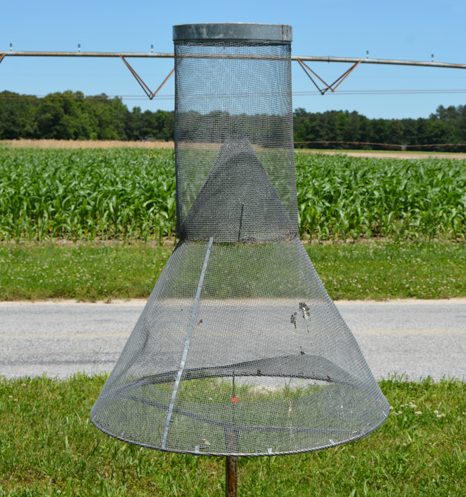
“Before I arrived in Delaware in 1979, the main focus was on the processing vegetables industry, specifically green beans and peppers, and how could they could use trap catches, particularly for the management of European corn borer,” said Whalen. “From 1979 until I retired in 2016, we developed an IPM program that used trap catches to make spray decisions as part of an IPM program for sweet corn, green beans and peppers. We have a long history of using IPM and making spray decision based on trap catches for these vegetable crops because once the caterpillar gets in the fruit the damage is already done.”
In addition to providing growers with decision-making information on the need for and timing of insecticide treatments, the IPM trapping program has historically alerted them to potential outbreak of migratory pests and allowed them access to historical pieces of information that gives a sense of the population dynamics of local pests.
Whalen said that the program would not be possible if it weren’t for the cooperation with the local growers and their willingness to allow the traps on their property.
“They did it for the sake of having information they could use on their farms as well as for farmers as a whole,” Whalen said. “They were really committed to getting this information and making sure all growers had access to the information. You can see people from the very beginning felt like knowing what was happening with insect populations in our state was really important.”
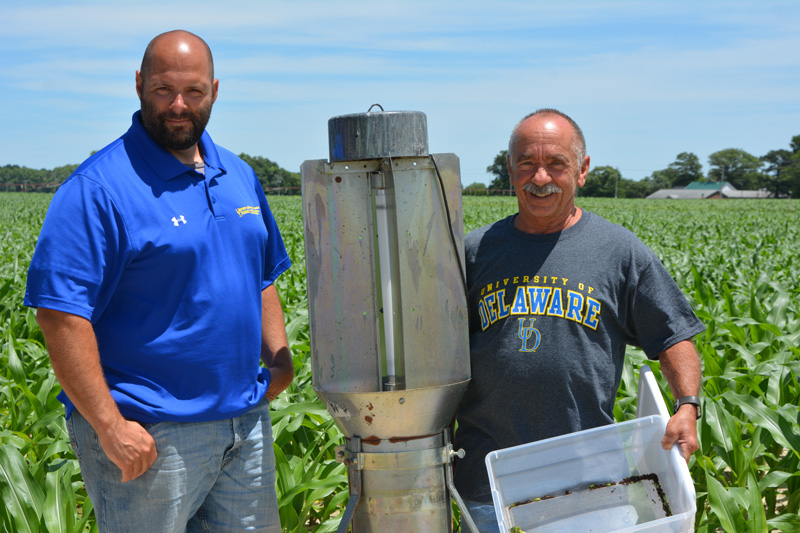
Contact Us
Have a UDaily story idea?
Contact us at ocm@udel.edu
Members of the press
Contact us at 302-831-NEWS or visit the Media Relations website

